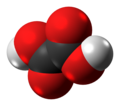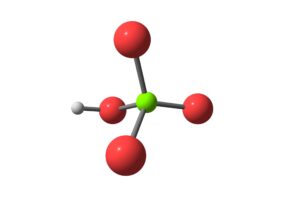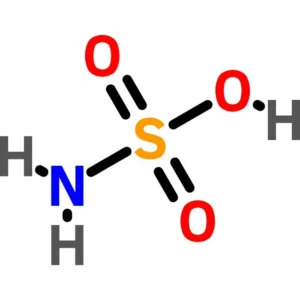Product *
Product
1-Acetonaphthone
1-ACETYL NAPHTHALENE 97.5% For Synthesis
1-ACETYLPIPERAZINE 98.5% For Synthesis
2-Acetamido-3-mercaptopropionic acid
2-Ethyl Hexanoic Acid (Octoic Acid)
2 Ethyl Hexanol
2154-AUTOBURETTES With PTFE stopcock, Class B
2154A - AUTOBURETTES With PTFE stopcock, Class B, Amber
2155 - AUTOBURETTES With Boroflo stopcock, Class A, with Individual Calibration Certificate
2156 - AUTOBURETTES With Boroflo stopcock, Class B
3450-ESSENTIAL OIL DETERMINATION APPARATUS
3452 - ALCOHOL DISTILLATION UNIT
4-ACETAMIDOPHENOL 98% Extra Pure
-86°CULT Freezers
ABSCISIC ACID 98.0% Extra Pure
ACACIA (Enzyme Free) AR
ACACIA Extra Pure
ACENAPHTHENE For Synthesis
ACES BUFFER
ACETALDEHYDE SOLUTION
ACETAMIDE 99% For Synthesis
ACETANILIDE 98.5% Extra Pure
ACETATE BUFFER SOLUTION pH 4.6
ACETATE BUFFER TS ACC. TO USP
ACETHYDRAZIDE 90% For Synthesis
Acetic Acid
ACETIC ACID 0.1M (0.1N) STANDARDIZED SOLUTION traceable to NIST
ACETIC ACID 1 MOL / L (1N) FOR 500 ML SOLUTION
ACETIC ACID 1M (1N) STANDARDIZED SOLUTION traceable to NIST
ACETIC ACID 1N SOLUTION
ACETIC ACID 30% Extra Pure
ACETIC ACID 60% Extra Pure
ACETIC ACID 90% SOLUTION AR
ACETIC ACID GLACIAL 99.5% Extra Pure
ACETIC ACID GLACIAL 99.7% AR
ACETIC ACID GLACIAL 99.7% AR (Aldehyde Free)
ACETIC ACID GLACIAL 99.8% For HPLC
Acetic acid hydrazide
Acetic acid isobutyl ester
Acetic acid isopropyl ester
Acetic acid octyl ester
Aceto carmine
ACETO ORCEIN
ACETOACETANILIDE 98% For Synthesis
Acetoacetic ethylester
Acetoacetic methylester
Acetone
ACETONE 1% w/v SOLUTION
ACETONE 99.5% AR/ACS
ACETONE 99.5% Electronic
ACETONE 99.8% For HPLC & UV Spectroscopy
ACETONE 99.8% PRA
ACETONE 99.9% GC
ACETONE 99% Extra Pure
ACETONE ALCOHOL DECOLOURIZER
Acetone dimethyl acetal
ACETONITRILE 99.5% AR
ACETONITRILE 99.5% SPECIALLY DRIED
ACETONITRILE 99.8% For DNA synthesis
ACETONITRILE 99.8% For PREPARATIVE HPLC
ACETONITRILE 99.8% PRA
ACETONITRILE 99.9% For HPLC & UV Spectroscopy
ACETONITRILE 99.9% GC
ACETONITRILE 99.9% HPLC Gradient grade
ACETONITRILE 99.9% LC-MS
ACETONITRILE 99% Extra Pure
ACETONITRILE/WATER 50:50 (W/W) 50% For HPLC
ACETOPHENONE 99.5% AR
ACETYL ACETONE 98% For Synthesis
ACETYL ACETONE 99.5%
ACETYL BROMIDE 98% For Synthesis
ACETYL CHLORIDE 98% Extra Pure
ACETYL CHOLINE CHLORIDE 99% AR
ACETYLENE TETRABROMIDE 98% Extra Pure
Acetylhydrazine
ACID FAST DECOLORIZER
Acid fuchsin
Acid red 66
Acid red 87
ACIDOCTOR B (Antidote for hydrobromic acid skin burn)
ACIDOCTOR C (Antidote for hydrochloric acid skin burn)
ACIDOCTOR F (Antidote for hydrofluoric acid skin burns)
ACIDOCTOR N (Antidote for nitric acid skin burn)
ACIDOCTOR P (antidote for phenol)
ACIDOCTOR S (Antidote for sulphuric acid skin burn)
ACIDOCTOR X (Antidote for bromine skin burn)
ACRIDINE ORANGE
ACRIDINE YELLOW G
ACRIFLAVINE
ACRYLAMIDE 98.5% For Electrophoresis
ACRYLAMIDE 98% For Synthesis
ACRYLAMIDE 99% Molecular Biology
Acrylic Acid
Acrylic Acid Glacial
ACRYLIC ACID (STABILIZED) 98% For Synthesis
ACRYLONITRILE (STABILISED) 99% Extra Pure
ACTIDIONE 98% AR
Activated charcoal
ADIPIC ACID
Alcohol Distillation Unit
Aluminium Sulphate
Aluminium Stearate
All Quartz Double Distillation Units
Allihn, for soxhlet extraction apparatus
Aluminium Oxide
Aluminium Oxide
Ammonium Chloride
Ammonium Sulphate
Antimony Tri Oxide
Ashless Quantitative
Aspirator Bottles with GL 45 cap and I/C stopcock
Aspirator Bottles with GL 45 cap and socket
Aspirator Bottles with GL 45 Cap and Tubulation
Autoburettes with Glass stopcock, Class A
Autoburettes with Glass stopcock, Class A, Amber
Autoburettes with Glass stopcock, Class A, Amber 2154A
Autoburettes with Glass stopcock, Class B
Autoburettes with Glass stopcock, Class B Amber
Autoburettes with PTFE stopcock, Class A, Amber
AUTOBURETTES With PTFE Stopcock, Class A, with Individual Calibration Certificate
B.O.D. Bottles
Beaker, Phillips (Conical) with spout
Beaker, Tall form with spout
Benzoic Acid
Benzyl Alcohol
Benzyl Per Oxide
Bis-Acrylamide
BORAX DECA / PENTA
Bottle, Pyknometer, with thermometer and capillary side tube
Bottle, relative density, with capillary
Bottle, relative density, with capillary, With Certificate
Bottles, dropping with dropper and rubber teat
Bottles dropping with pipette and rubber teat, Amber
Bottles, flasks for wash bottles cat no. 1660
Bottles, for gas washing
Bottles, for gas washing bottle, cat no. 1760
Bottles, plastic clamp for joint fittings
Bottles, Reagent, narrow mouth, with I/C stopper
Bottles, Reagent, narrow mouth, with screw cap
Bottles, Reagent, narrow mouth, with screw cap, Amber
Bottles, Reagent, wide mouth, Square
Bottles, stopper for wash bottles cat no. 1660
Bottles, tooled neck, Solution bottle
Bottles, wash, LDPE plastic bottles
Bottles, weighing, with interchangeable Amber
Bottles, weighing, with interchangeable lids
Burettes with Boroflo stopcock, Class A
Burettes with Boroflo stopcock, Class A, Amber
Burettes with Boroflo stopcock, Class B
Burettes with Boroflo stopcock, Class B, Amber
Burettes With Glass stopcock, Class A
Burettes With Glass stopcock, Class B
Burettes With PTFE stopcock, Class A
Burettes With PTFE stopcock, Class B
Butyl Acrylate Monomer
Butyl Cellosolve
Butyl Di Glycol
Butyl Glycols
Calcium Chloride
Calcium Stearate
Calcium Sulphate
CAUSTIC LYE 48% (TANKER LOAD)
Caustic Potash Flakes
Caustic Soda Flakes ( Lye)
Chambers Deep Freezer (-24°C)
Citric Acid
CITRIC ACID MONO / ANHY
CMC (CARBOXYMETHYL CELLULOSE SODIUM)
Cobalt Oxide
Cold Cabinets Humidity / Stability
Compact Cooling Centrifuges
Condensers, Allihn, Drip Tip
Condensers, Friedrichs, Drip Tip
Cooling Incubators
Cuastic Pottash (POTASSIUM HYDROXIDE)
Cyclohexanone
Cylinders Class A, Hexagonal base, Pour out
Cylinders Class A, Hexagonal Base, with I/C Stopper
Cylinders Class B, Hexagonal base, Pour out
Cylinders Class B, Hexagonal Base, with I/C Stopper
DAP (DIAMMONIUM PHOSPHATE)
Dean Stark Distilling Apparatus
Deep Freezer (-20°C &-40°C)
Desiccators with Cover and Porcelain Plate, Plastic Knob
Desiccators with Vacuum, Stopcock with PTFE
Desiccators with Vacuum stopcock with PTFE spindle and Porcelain plate, Amber
Determination Apparatus (Clevenger Apparatus)
Di Acetone Alcohol
Di Butyl Maleate
Di Butyl Phthalate
Di Ethyl Phthalate
Di Ethylene Glycol
Di Octyl Maleate
Di Octyl Phthalate
Di Propylene Glycol USP/IND
Di Sodium Phosphate
Diethanolamine
Dishes, Crystallizing
Dishes, Culture, Petri
DMSO (Dimethyl Sulfoxide)
Double Distillation Units
Edtaa Acid
Ethanol All Grades
Ethyl Acetate
Ethyl Acrylate
Ethyl Cellosolve
Filter membrane, Cellulose Nitrate
Filter membrane, Gridded Cellulose Nitrate
Filter membrane, Nylon-66
Filtration Assembly with inbuilt pump
Flask, Conical Erlenmeyer, Long Neck without Rim
Flask, Conical Erlenmeyer, Narrow Mouth 4989 109 with Rim, Amber
Flask, Conical Erlenmeyer, Narrow Mouth Tilt measure
Flask, Conical Erlenmeyer, Narrow Mouth with 5019 110 I/C Joint and Stopper, Amber
Flask, Conical Erlenmeyer, Narrow Mouth with I/C Joint and Stopper
Flask, Conical Erlenmeyer, Narrow Mouth with Rim
Flask, Conical Erlenmeyer, Wide mouth Filter
Flask, Conical Erlenmeyer, with screw cap
Flask Conical Erlenmeyer, with screw cap, Baffled bottom
Flask, Conical Erlenmeyer, without Rim
Flask, Culture, Haffkine
Flask, Distilling with I/C stopper
Flask, Distilling with side arm
Flask, Flat bottom, narrow mouth
Flask, Flat bottom, narrow mouth, short neck with 4100 97 I/C joint
Flask Iodine flask with I/C glass stopper
Flask, Round bottom, 3 necks, parallel
Flask, Round bottom, 4 necks, angular
Flask, Round bottom, 4 necks, parallel
Flask, Round bottom, narrow mouth
Flask with glass tubulation
Formaldehyde
Formic Acid
Gas sampling tubes
Gerber Centrifuge
Gerber, Milk Pipettes
Gerber, Milk Pipettes With Certificate
Glass Fiber
Glass Filtration Assembly, 47mm
Glass Filtration Assembly, 90mm
Glass Filtration Assembly with bottle, 47mm
Glass Filtration Assembly with bottle, 90mm
Glass Filtration Assembly with GL 45 Universal adapter, 47 mm
Glass Filtration Assembly, With silicone stopper, 25mm
Glass Filtration Assembly, With silicone stopper, 47mm
Glycerine BP / USP
GRAHAM COILED CONDENSER With Drip Tip
Hardened Ashless
Heavy Duty Centrifuges Rotary
Heptane
Hexanes
High temperature resistant screw caps
Hydro Chloric Acid
Hydro Fluoric Acid
Hydrogen Per Oxide 50%/35%
Iron Oxide
Iso Butanol
Iso Butyl Acetate
Iso Propyl Acetate
Iso Propyl Alcohol
Isophorone
Kjeldahl Flask
Kjeldahl Flask with I/C Joint
Laboratory / Research Centrifuges
Laboratory Stirrers
Lactic Acid
Light Magnesium Oxide
lmpinger
Magnesium Oxide
Magnetic Stirrers
Maleic Anhydride
Medico Centrifuge
Melamine
Methanol
Methyl Acrylate
Methyl Ethyl Ketone
Methyl Iso Butyl Ketone
Methyl Methacrylate
Methylene Chloride
Methylene Di Chloride ( MDC)
Micro Centrifuges
Mineral Turpentine Oil
Mixed Xylene
Mohr Piepttes, Class A
Mohr Piepttes, Class B
Mono Ethylene Glycol
Mono Quartz Distillation Unit
Mono Sodium Phosphate
Monoethanolamine
Multiport HPLC Cap
N-(2-Acetamido)-2-aminoethanesulphonic Acid
N-ACETYL-DL-TRYPTOPHAN 99% For Biochemistry
N-ACETYL-L-CYSTEINE 99% For Biochemistry
N-Butanol
N Butyl Acetate
N-Propanol
N Propyl Acetate
Nessler Cylinders
Neya Centrifuge
Nickel Oxide
Nitric Acid (Tanker Load)
On Demand All Quartz Distillation Unit
Ortho Xylene
Orthophosphoric Acid 8 5 % T e c h
Ovens / Incubators
Oxalic Acid
PEG (Polyethylene Glycol) 400 / 600 / 6000
Perchloric Acid
Perchloro Ethylene
Phenol
Phosphoric Acid
Phosphoric Acid 85%
Phthalic Anhydride
Poly Aluminium Chloride
Potassium Bi Sulphate
Potassium Chloride
Potassium Per Magnate
Potassium Per Sulphate
Potassium Nitrate
Propylene Glycol USP/IND
Qualitative Filter Papers
Quartz Crucibles without lid
Quartz Lids for crucibles
R M Value Apparatus
Reagent Bottles 1507 37 Bottles, Reagent, narrow mouth, with 1/C stopper, Amber
Red Oxide
Refrigerated Centrifuges
Refrigerators Refrigerator Cum Freezer
Roux Bottles
Screw caps with pouring rings
Selenium Di Oxide
Serological Pipettes, Class A
Shakers Orbital Shaking Incubators
SHMP (SODIUM HEXAMETAPHOSPHATE)
Silicon Emulsion
Silicon Oil/ Defoamer
SMBS ( Sodium Meta Bi Sulphite)
SODA ASH LIGHT / DENSE
Soda Ash ( Sodium Carbonate)
Sodium Benzoate
Sodium Bi Sulphate
SODIUM BISULPHITE / META BISULPHITE
Sodium Gluconate
Sodium Hexa-Meta Phosphate
SODIUM LAYRYL ETHER SULPHATE
Sodium Nitrite/Nitrate
Sodium Phosphate
Sodium Sulphate
Solvent Naphtha
Sorbitol
Soxhlet extraction apparatus set
Soxhlet for extraction with I/C joint Condensers
SS Filter Assembly with external clamp 47 mm
SS Filter Assembly with inbuilt clamp 47 mm
SS Filter Funnel with locspin k type, 47 mm
SS Vacuum Filtration Manifold
Stearic Acid
Stopper for gas washing bottle, cat no. 1760
STPP (SODIUM TRIPOLYPHOSPHATE)
Styrene
Succinic Acid
Sulphamic Acid
Sulphuric Acid
Tartaric Acid
TCP (TRICRESYL PHOSPHATE)
Tetrahydrofuran
Thimbles
Titanium Di Oxide Anatase
Titanium Di Oxide Rutile
Toluene
Tri Ethylene Glycol
Trichloroethylene
Triethanolamine 85-99%
TRIETHYLENETETRAMINE
TRIETHYNOLAMINE
Tube Centrifuge, Graduated
Tube Centrifuge, Plain
Vacuum Filtration Pump
Vacuum Oven Laboratory
Vinyl Acetate Monomer
Vortex Mixers & Shakers
Walk-in Chambers / Cold Rooms
Watch Glass
Yellow Oxide
Zinc Oxide
Zinc Stearate
Zinc Sulphate







Reviews
There are no reviews yet.